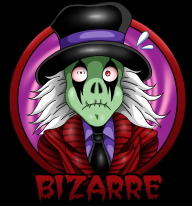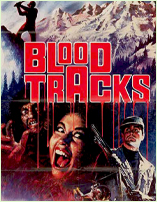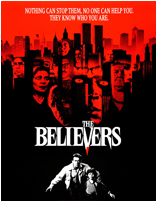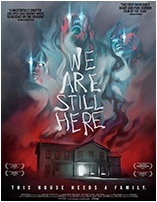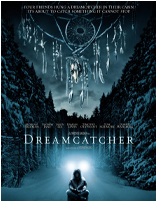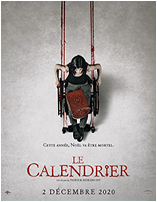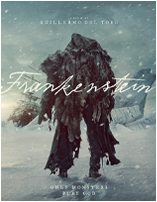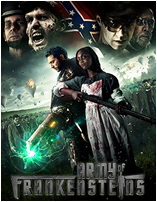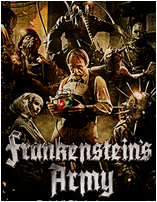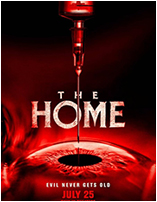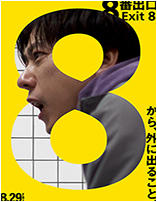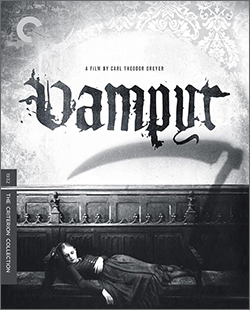 Allan Gray is a student of the occult, and we see him arriving at an inn in the village of Courtempierre, France. In his cozy rented room, he is suddenly awakened by a rambling old man entering the place, who ends up leaving a small package on the table with a wrapping paper where “To be opened upon my death“ is written on it. Gray becomes curious, takes the package, and leaves. He starts following a disembodied shadow of a peg-legged soldier, and ends up in what appears to be an abandoned factory of some kind. There, the shadow reunites with his body, while other shadows are dancing around.
Allan Gray is a student of the occult, and we see him arriving at an inn in the village of Courtempierre, France. In his cozy rented room, he is suddenly awakened by a rambling old man entering the place, who ends up leaving a small package on the table with a wrapping paper where “To be opened upon my death“ is written on it. Gray becomes curious, takes the package, and leaves. He starts following a disembodied shadow of a peg-legged soldier, and ends up in what appears to be an abandoned factory of some kind. There, the shadow reunites with his body, while other shadows are dancing around.
Okey-dokey… I’m already a bit lost at this point.
Gray sees an old woman who seems to hold some kind of power over the shadows, and then encounters an Einstein-lookalike. He eventually follow some more shadows, and ends up at a manor where he sees that the lord of the place is the one and same man who entered his room at the inn. Hmm…curiouser and curiouser. The man gets shot by the shadow of a soldier, and Gray helps a servant to get the man back into the manor, but it’s too late to save his life. The man has two daughters: Giséle, who comes into the room and watches her father die, and the other is named Léone, and she is bedridden with some mysterious disease.
Gray is invited to stay for the night, and he enters the library of the manor where he finds a book about vampires. He and Giséle then sees Léone walking outside, and they hurry to get her back inside. When they catch up to her, they see that some old crone is bent over the young woman’s unconscious body, who flees when they come close. When they examine Léone, they notice fresh bite wounds on her body. Obviously we’re dealing with some vampire activity here…among a lot of other oddities in this surreal fever-dream.

Vampyr (German title: Vampyr – Der Traum des Allan Gray) is a gothic horror film from 1932, directed by Danish director Carl Theodor Dreyer. The script for the movie was written by Dreyer and Christen Jul, and it is based on elements from Sheridan Le Fanu’s 1872 collection of supernatural stories called In a Glass Darkly. It was also Dreyer’s first sound film, and it was recorded in three languages. There is very little dialogue throughout the movie though, and it still uses title cards like in the silent films. It was shot entirely on location, in Courtempierre, France.
The film was a massive flop, where it received mostly negative reception after its release in Germany. Dreyer actually edited the film a bit after the premiere, and it was then released in France where it received a bit more mixed reviews, but it was still an overall huge failure: in Vienna, there were even audiences who wanted their money back and it caused such a riot that the police had to restore order with nigh sticks. Yikes. The film premiered in Copenhagen in 1933, where Dreyer didn’t attend as he had suffered a nervous breakdown and was in a mental hospital in France. This entire debacle must’ve taken quite a toll on him…fortunately it didn’t break him though, as he continued making movies until 1964, only 4 years before his death in 1968.
Despite being considered a very low point in Dreyer’s moviemaking career, Vampyr is now seen in a much more favorable light. But I’m not gonna lie: I was mostly sitting like a question mark during the majority of this movie, wondering what the actual big F is going on. Sure, there is a certain narrative going on here with a story hidden behind the veil of apparent illogicality, but it all feels mostly like a nonsensical dream. Which was of course, the point as well: the movie is supposed to have this surreal, dreamlike atmosphere, and the movie definitely nails it. Just like a dream, certain things are never really explained, they just…are. And they make sense only in a dream-logic state. Despite the nonsensical tone, Vampyr delivers a very atmospheric experience where several scenes are bringing out an eerie mood. The disembodied shadows makes for some interesting and inspired scenes, but there are also some other bizarre scenes with special effects that even gave it a little bit of whimsy. I also really liked how the film’s vampire differs so much from the classic “romantic“ vision: here, she’s a haggard old woman who resides only in the coffin she was buried in, no fancy castle for her or anything like that. What the old crone does have, however, is some kind of Renfield-ish accomplice who does get his comeuppance later on in what looks like a scene that must’ve been rather uncomfortable to shoot…
Vampyr is a surreal, weird and dreamlike experience, utilizing some clever camera work, combining light and darkness in a way that heightens the haunting atmosphere. The vampire aspects, despite being the “main story“ here, are a little bit in the background for a lot of the time as there’s so much absurdities going on here. A weird film indeed, and what can probably be considered an early arthouse film.



Director: Carl Theodor Dreyer
Writers: Christen Jul, Carl Theodor Dreyer
Country & year: Germany/France, 1932
Actors: Julian West, Maurice Schutz, Rena Mandel, Sybille Schmitz, Jan Hieronimko, Henriette Gérard, Albert Bras, N. Babanini, Jane Mora
IMDb: https://www.imdb.com/title/tt0023649/
![]()
